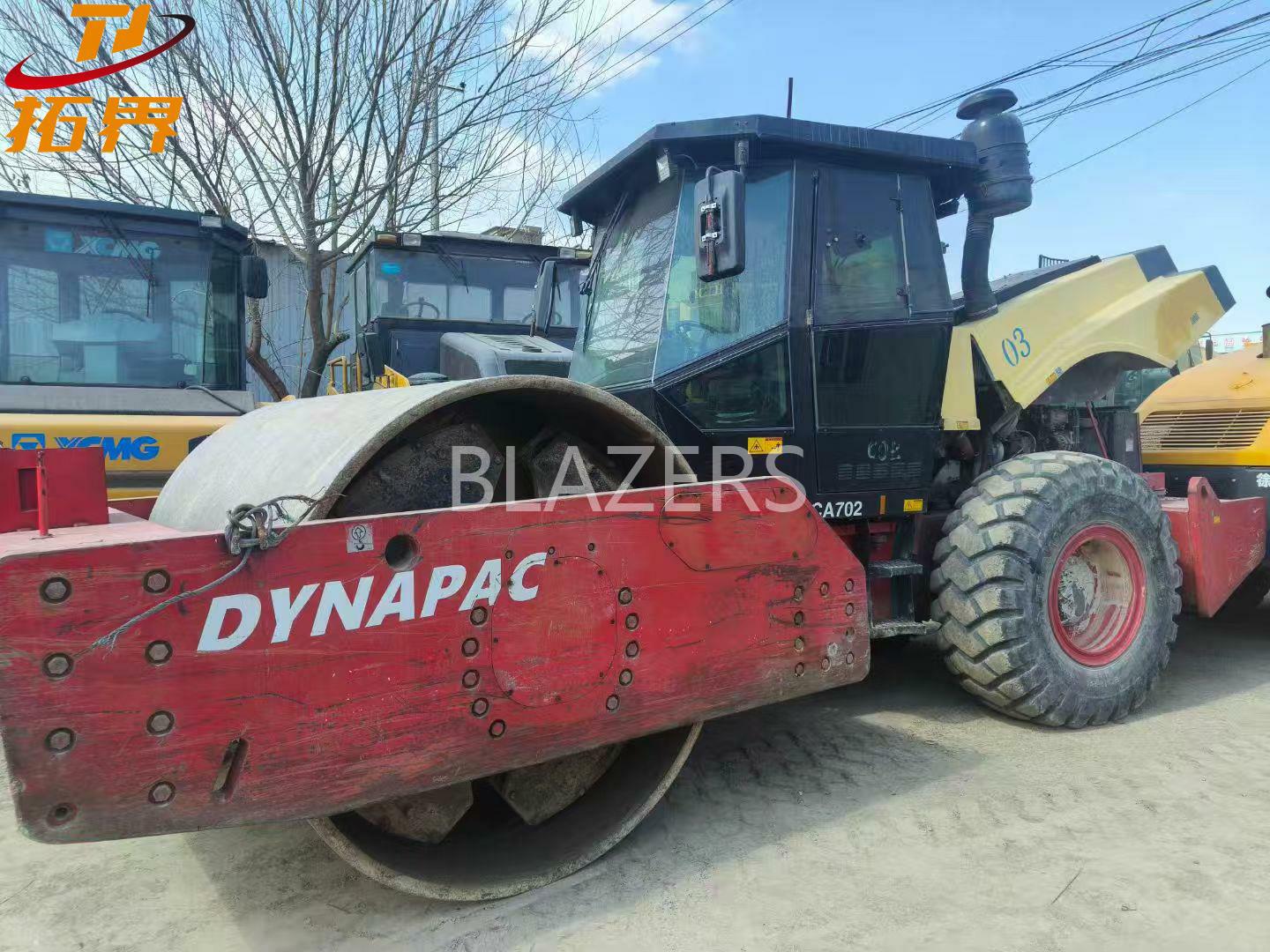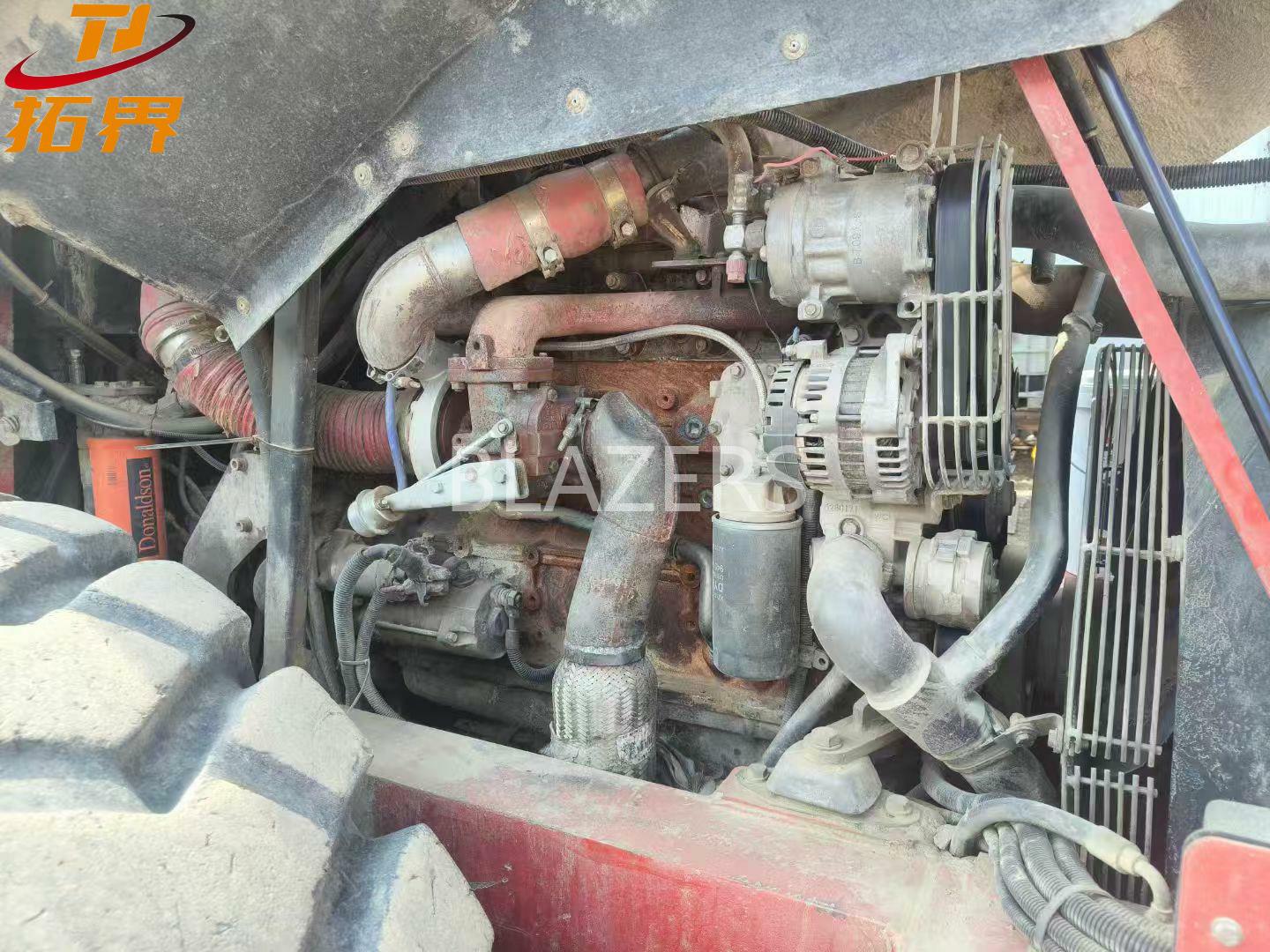The Parker CA702 road roller has strong high-frequency vibration penetration power, and the two steel wheels work together to compact the roadbed evenly and firmly. The hydraulic system responds quickly and is designed for durability, capable of withstanding heavy loads and maintaining stability for ten years.
About 15-ton Parker CA702 single-wheel road roller
Narrate
This 2015 Parker CA702 road roller has traveled across highways and municipal construction sites over the past ten years, efficiently compacting the roadbed with powerful vibrations. Each operation leaves behind a uniform and solid road surface. The well-maintained double steel wheels remain flexible and reliable, while the hydraulic system responds quickly and is durable. The overall performance remains as stable as ever. Now it is ready to go, ready to inject solid power into your project at any time and continue the legendary high value and cost-effectiveness in construction.

We understand that the value of a road roller that has undergone 3,000 hours of operation does not lie in its new paint finish, but in the unoverturned eccentric block counterweight inside the steel wheels; the core competitiveness of a group of second-hand hydraulic pumps is reflected in the pressure curve graph, where there are no artificial repair-induced peak mutations. Letting the equipment cross mountains and seas in its most genuine state is the deepest respect for global infrastructure workers.

15-ton Parker CA702 single-wheel road roller Specificaion
Model: Parker 702 (Fully Hydraulic Single-drum Vibratory Roller)
Operating Mass: 14.8 tons (Drum mass 9.2 tons)
Engine Model: Volvo D3.1J (Turbocharged & Intercooled)
Peak Torque: 650 N·m @ 1,600 rpm
Cooling System: Independent dual-fan (hydraulic oil + coolant)
Vibration Frequency: 28/33 Hz (Dual-frequency adjustable)
Amplitude: 1.8/1.0 mm (Dual-amplitude auto-switching)
Max. Excitation Force: 290 kN (at 33Hz)
Engine: Volvo D3.1J (Euro IIIA Emission)
Rated Power: 110 kW @ 2200 rpm
Gradeability: ≥45%
Drum Dimensions: Ø1,500 mm × 2,100 mm (Width)
Min. Turning Radius: ≤5.8 m (Articulated steering)
Fuel Consumption: ≤12.5 L/h (ECON Mode)
Hydraulic System Pressure: 35 MPa (Closed-loop vibration circuit)

Daily Maintenance Checklist for Road Roller
1. Check Fluid Levels & Fuel
Inspect engine oil, hydraulic oil, transmission oil, and coolant levels (using dipstick or sight glass); fuel tank level. In hot weather (like current summer), coolant inspection is particularly critical to prevent engine overheating and shutdown.
2. Inspect Filters & Air Intake System
Check the cleanliness of air filter, fuel filter, and hydraulic oil filter; inspect air intake system for blockages. Lightly tap the air filter to remove dust (replace if severely dirty); ensure the filter element is undamaged. This step prevents contaminants from entering the engine, reducing 80% of early wear risk. At dusty construction sites (e.g., roadwork), daily air filter cleaning significantly enhances equipment efficiency.
3. Inspect Ground Contact Components & Brakes
Check tire/steel wheel pressure and wear (using tire pressure gauge); brake fluid level and braking performance (test by pedal depression); tightness of steel wheel or tire bolts. Daily inspections identify potential issues (e.g., loose bolts), preventing downtime repair costs.
4. Clean Machine & Check Fasteners
Remove mud, asphalt residue, and water stains from the roller’s surface; inspect critical fasteners (e.g., engine mounts, roller connection bolts). Clean with a soft brush or low-pressure water jet to avoid damaging electrical components. Post-cleaning, a tidy appearance improves heat dissipation. During rainy seasons, cleaning prevents corrosion, extending equipment life by 5+ years.
5. Operational Test
Start the equipment; check dashboard indicators (e.g., oil pressure, battery voltage); listen for abnormal noises/vibrations; test steering and compaction functions. Limit runtime to 2–3 minutes; stop immediately for troubleshooting if warning lights activate. Daily tests enable early fault detection (e.g., hydraulic system noise), reducing 30% of unexpected repair costs.